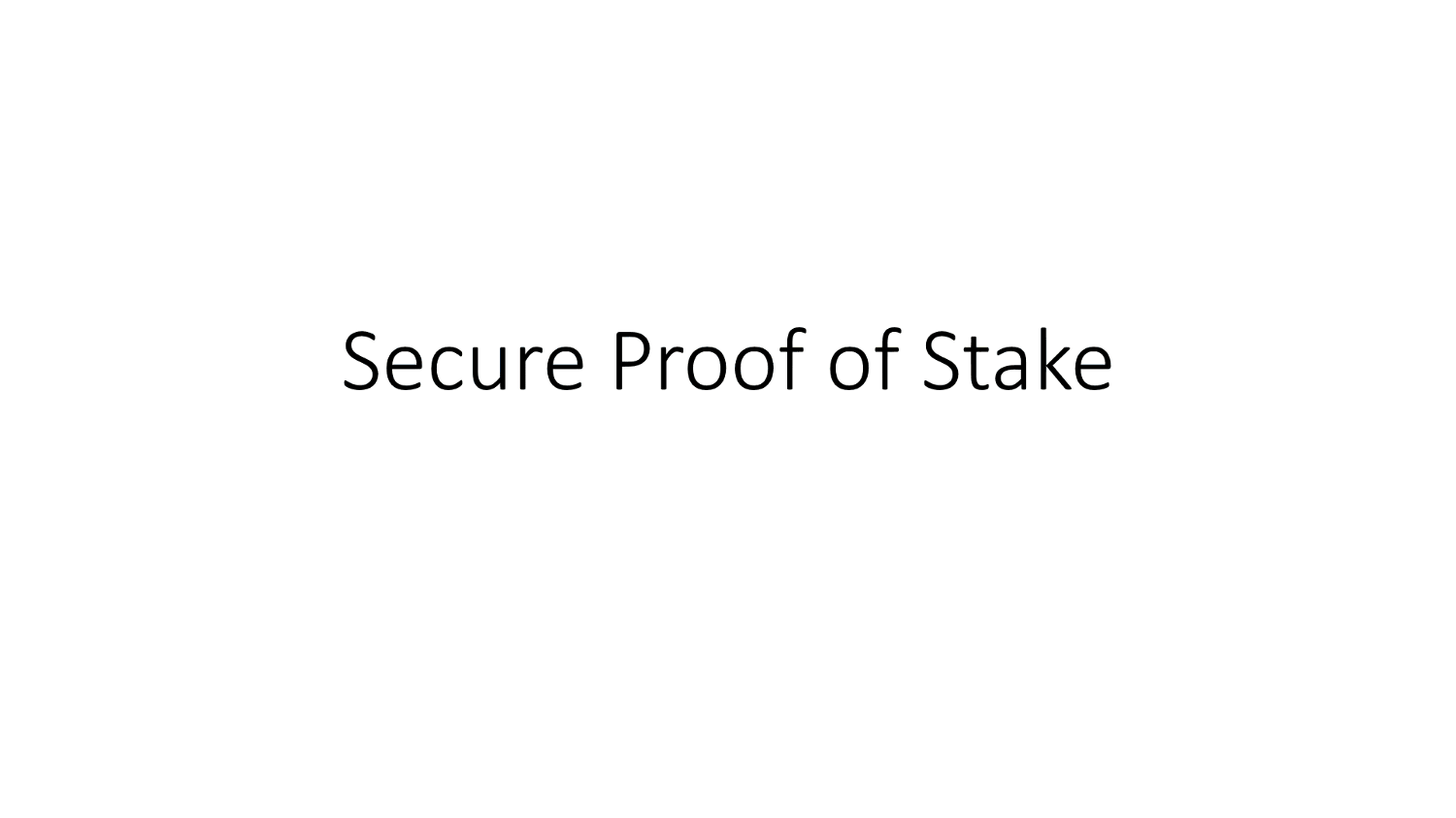
Secure Proof of Stake
We introduce our Secure Proof of Stake consensus mechanism, that expands on Algorand's idea of a random selection mechanism, differentiating itself through the following aspects:
Elrond introduces an improvement which reduces the latency allowing each node in the shard to determine the members of the consensus group (block proposer and validators) at the beginning of a round. This is possible because the randomization factor r is stored in every block and is created by the block proposer using a BLS signature on the previous r.
The block proposer is the validator in the consensus group who's hash of the public key and randomization factor is the smallest. In contrast to Algorand's approach, where the random committee selection can take up to 12 seconds, in Elrond the time necessary for random selection of the consensus group is considerably reduced (estimated under 100 ms) excluding network latency. Indeed, there is no communication requirement for this random selection process, which enables Elrond to have a newly and randomly selected group that succeeds in committing a new block to the ledger in each round. The tradeoff for this enhancement relies on the premise that an adversary cannot adapt faster than the round's time frame and can choose not to propose the block. A further improvement on the security of the randomness source, would be the use of verifiable delay functions (VDFs) in order to prevent any tampering possibilities of the randomness source until it is too late. Currently, the research in VDFs is still ongoing - there only a few working (and poorly tested) VDF implementations.
In addition to the stake factor generally used in PoS architectures as a sole decision input, Elrond refines its consensus mechanism by adding an additional weight factor called rating. The node's probability to be selected in the consensus group takes into consideration both stake and rating. The rating of a block proposer is recalculated at the end of each epoch, except in cases where slashing should occur, when the actual rating decrease is done instantly, adding another layer of security by promoting meritocracy.
A modified BLS multisignature scheme with 2 communication rounds is used by the consensus group for block signing
Elrond considers formal verification for the critical protocol implementations (e.g. SPoS consensus mechanism) in order to validate the correctness of our algorithms.
please visit us:
Official website: www.elrond.com
Elrond Github: https://github.com
Whitepaper: https://elrond.com/files/Elrond_Whitepaper_EN.pdf
Twitter: https://twitter.com/ElrondNetwork
Source
Plagiarism is the copying & pasting of others work without giving credit to the original author or artist. Plagiarized posts are considered spam.
Spam is discouraged by the community, and may result in action from the cheetah bot.
More information and tips on sharing content.
If you believe this comment is in error, please contact us in #disputes on Discord
Hi! I am a robot. I just upvoted you! I found similar content that readers might be interested in:
https://elrond.com/files/Elrond_Whitepaper_EN.pdf